Female Rage in Art
Since Auguste Toulmouche’s 1866 masterpiece The Reluctant Bride recently captured the internet’s attention, discussions about female rage...
Martha Teverson 6 May 2024
Valentin Serov (1865–1911), was a student of Ilya Repin, and heir to the best traditions of the Russian realistic school. From the very beginning of his creative activity he acts as a principled innovator and remains so until the end of his life. Serov is known for his exquisite portraits of personalities from the Belle Epoche.

Valentin Serov was a laconic, serious, reserved, and very principled person. The revolutionary events of 1905 shocked him very deeply. As a result, he resigned from his title of academician because the head of the Academy of Arts was the Grand Duke Vladimir, who gave the order to shoot the unarmed demonstrators. He also donated money and drawings to a fund aiding revolutionaries.
Above all, Serov was a very demanding person. Despite being very famous and praised, he was always haunted by dissatisfaction with his own work. If it seemed to him that the portrait was falling into banality, Serov called it a “portrait of a portrait”.
“Each portrait is like a disease to me.”
Valentin Serov, letters, 1985. Virtualrm.
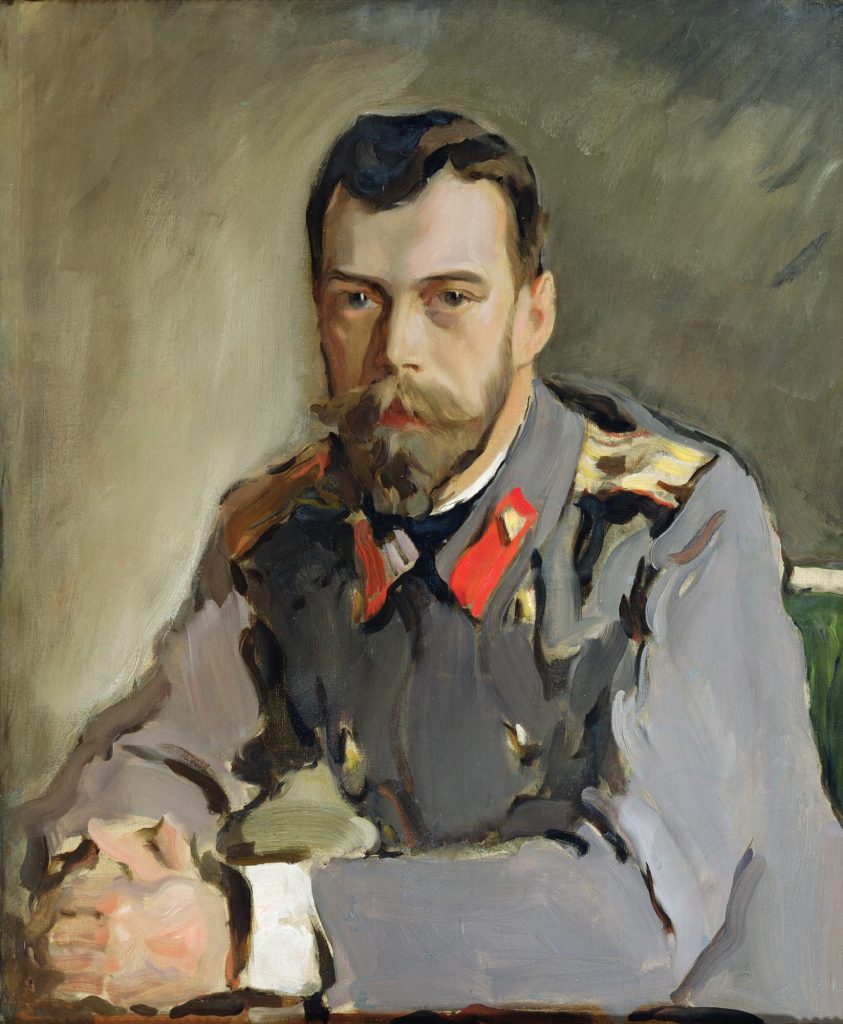
In 1900, Serov completed a home portrait of Nicholas II. He painted the portrait in just two sessions. At first, the work did not go well and the painter could not make a successful sketch. Then Nicholas, in his everyday clothes, tired, sat down at the table – Valentin Serov grabbed this rare moment. He immediately created a copy of the painting, because the Empress did not like the portrait; she was in the room during the sessions and gave the artist advice. At one point, Serov suggested that Alexandra Feodorovna finish the picture herself. She left, and the artist continued to work.
In 1887 Serov had already been declared an established painter thanks to the painting Girl with Peaches. This masterpiece was painted when he was only 22. At this time Russian art evolved from critical realism to poetic realism. So, Valentin Serov broke free from the negative reflection of events and turned to happiness and beauty as the main themes in his art.
Youth, springtime and vitality are featured in this work. Girl with Peaches seems to be filled with joyful light animation that shines through in the appearance of the portrayed girl. The sitter is Vera Mamontova, daughter of Russian merchant (and a patron of the arts) Savva Mamontov. She was 11 years old at the time and it was extremely hard for the energetic child to pose! As a result, the portrait took two months of working every day to complete.
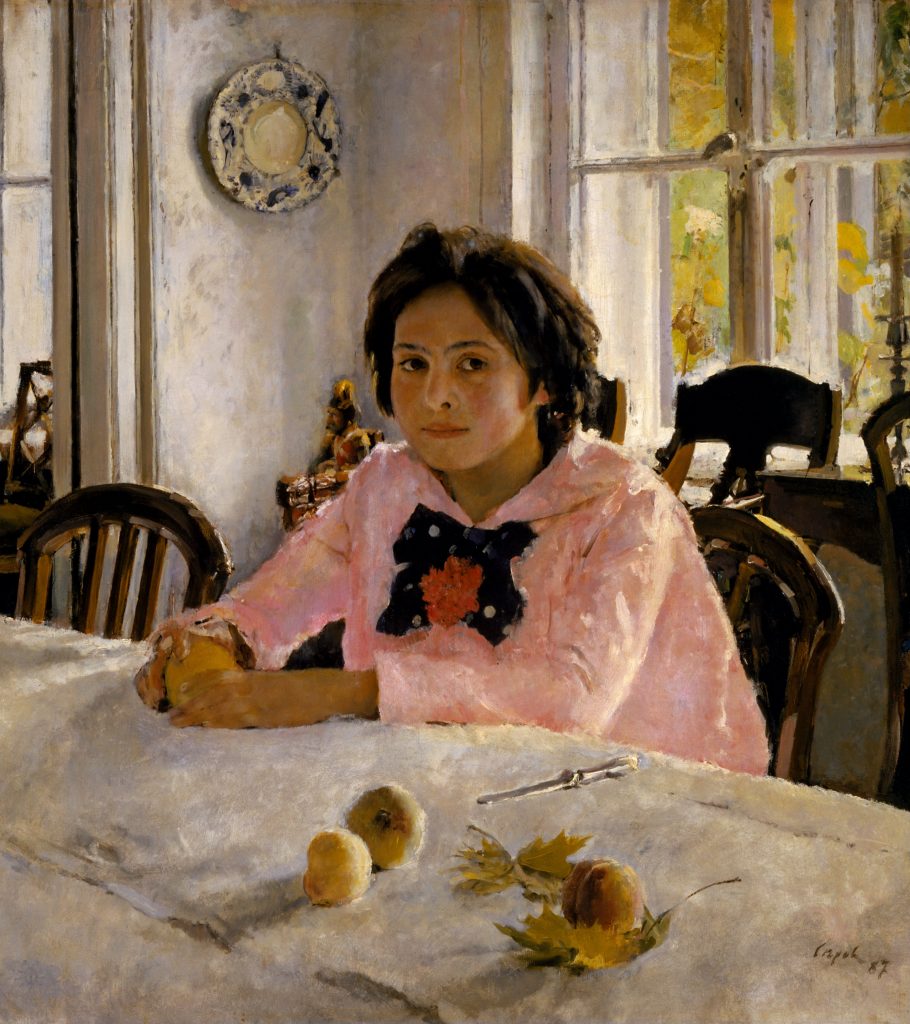
Along with Konstantin Korovin, Serov represents Russian Impressionist painters. The features typical for Impressionist art, like only fragmentarily depicted objects, are easy to observe in Serov’s paintings. Serov was a very European artist when it comes to his style, although he was quite Russian in the direction of his artistic search.
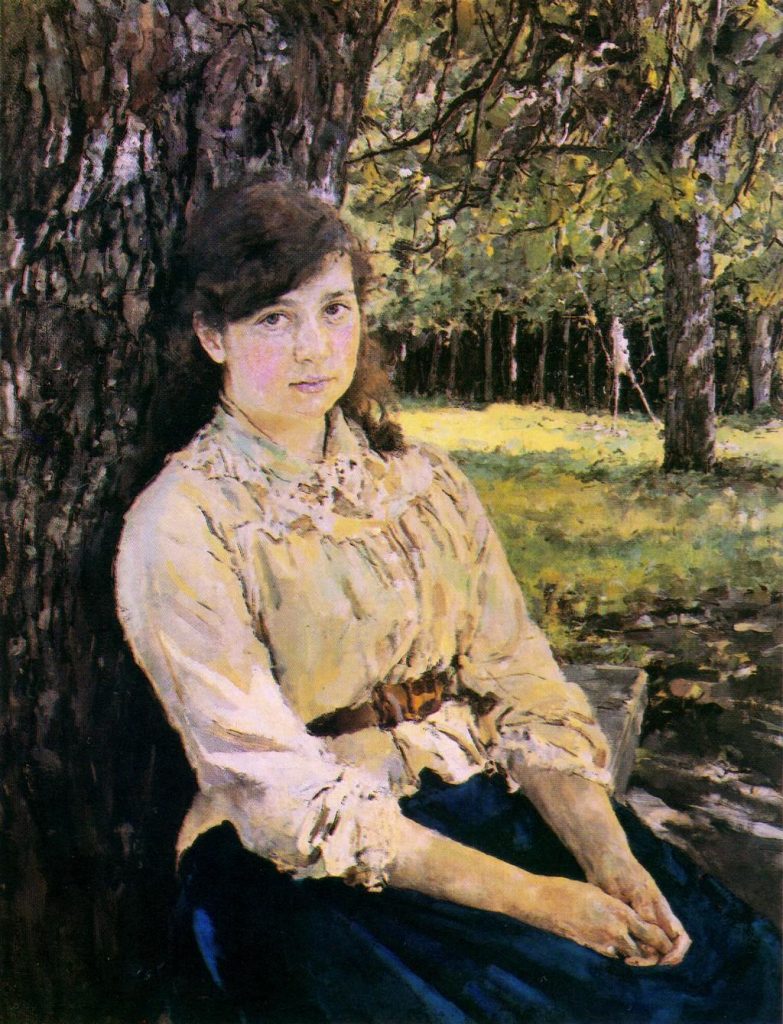
During the 1890s, Serov mainly portrayed writers, actors, and painters. Certainly, he seemed to be intrigued by creative individuals (aren’t we all, dear readers?).
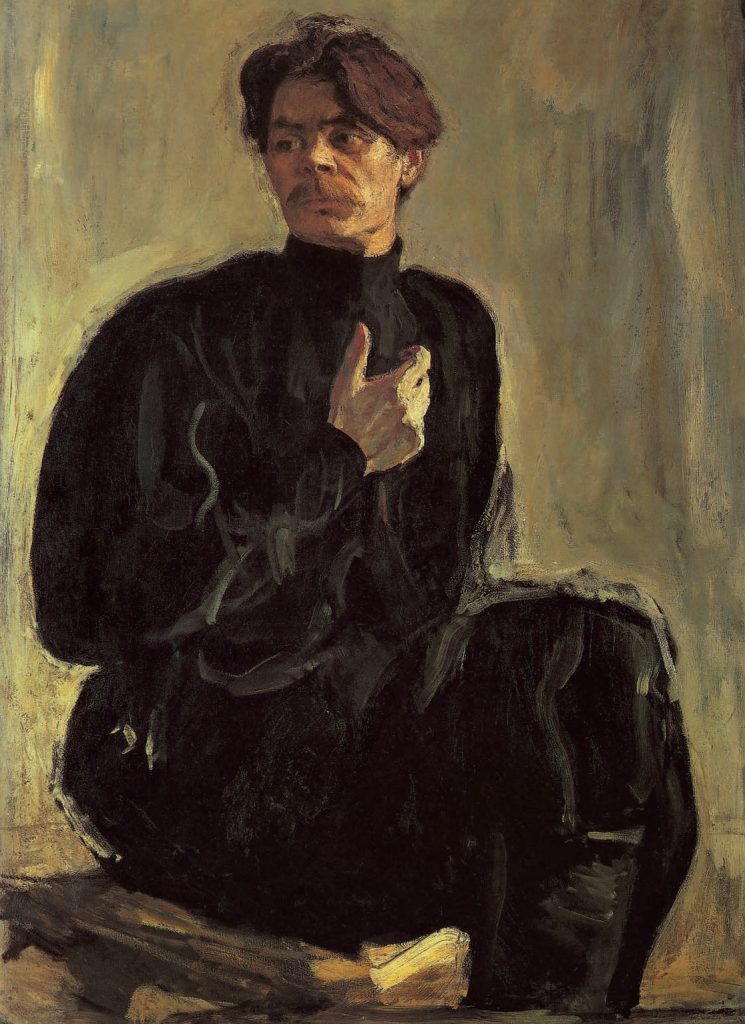
Creative personalities are shown as romantic, lonely geniuses in Serov’s art. The Russian writer Maxim Gorky is depicted with a look of charming thought, always ready to be surprised. It seems like he is talking to someone – and this someone is likely to be the time or history itself. In the composition of his portrait, Serov used the pose of one of Michelangelo‘s sculptures.
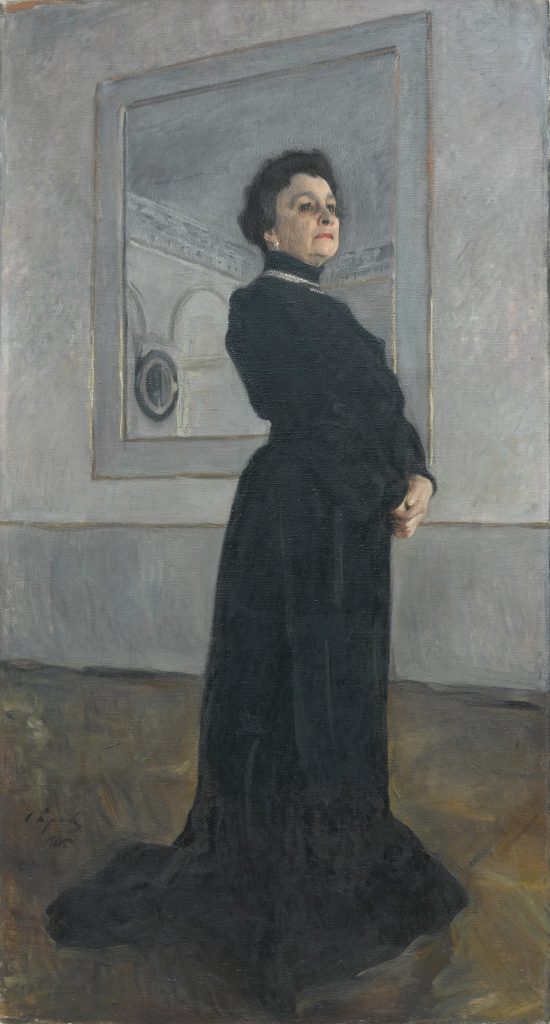
Actress Maria Yermovola is shown in full, standing straight, seen from the side. The portrait is immersed in an atmosphere of silence. Similarly to the face of Maxim Gorky, the face of Yermolova seems to glow with an inner light.
At the same time, Serov was creating great ceremonial portraits as well. Read about one of them, Portrait of Princess Olga Orlova, here!
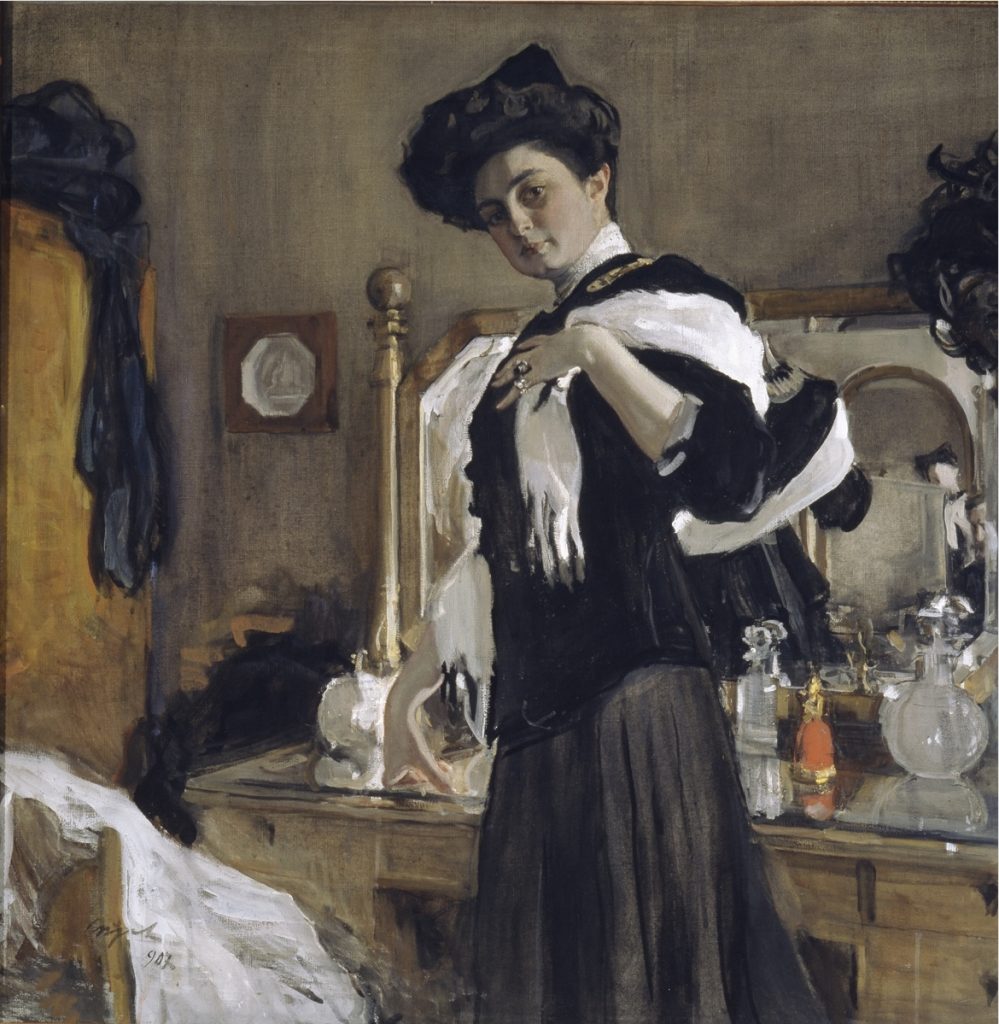
Another impressive portrait is that of Henriette Grisham. Serov always carefully chose the pose and surroundings. What does the movement of Girshman’s hand mean? Whether she wants to take off her fur boa or wants to leave it is not important. It is essential that with this gesture a beautiful, rich lady, protects herself as an inaccessible jewel, while at the same time presenting her beautiful, fragile hand. There is no vulgarity or flashiness in the picture. However her exquisite and proud gesture and face immediately make it clear that this woman belongs to the elite.
“Many wanted the honor to be painted by Serov, but many were afraid of his all-seeing eye.”
Olga Serova, Memories of my father Valentin Alexandrovich Serov, 1986. Virtualrm.
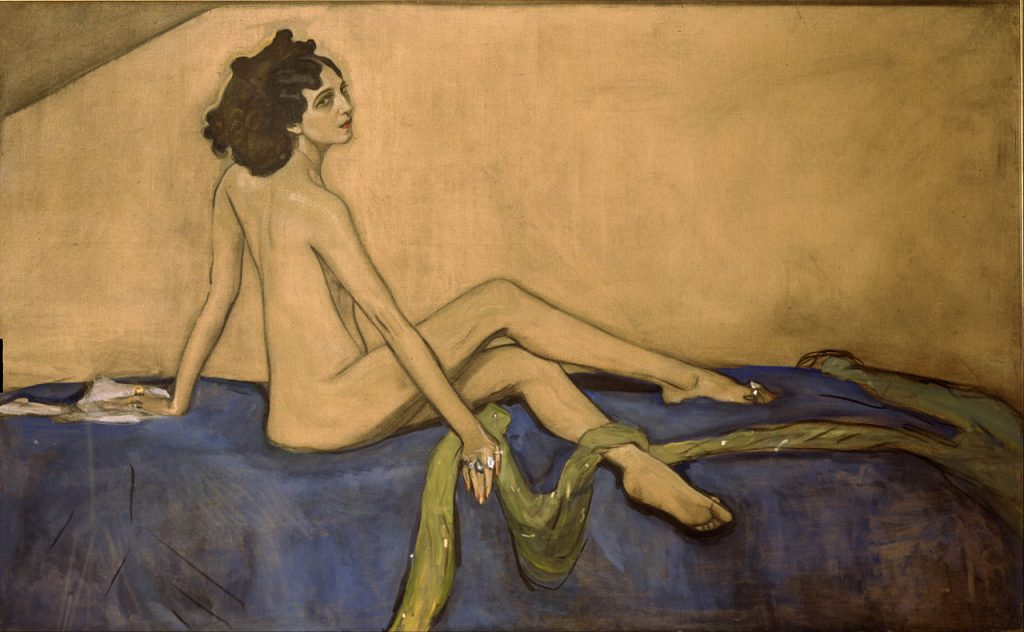
The portrait of dancer Ida Rubinstein is something unusual among Serov’s paintings. The artist was clearly inspired by the Art Nouveau style. His Ida is modern, tart, and graphic, which perfectly caught the model’s character.
Serov was a master not only of portraits but also historical scenes, theatrical sketches, and more. If you want to read more about this great Russian painter, please let us know!

DailyArt Magazine needs your support. Every contribution, however big or small, is very valuable for our future. Thanks to it, we will be able to sustain and grow the Magazine. Thank you for your help!